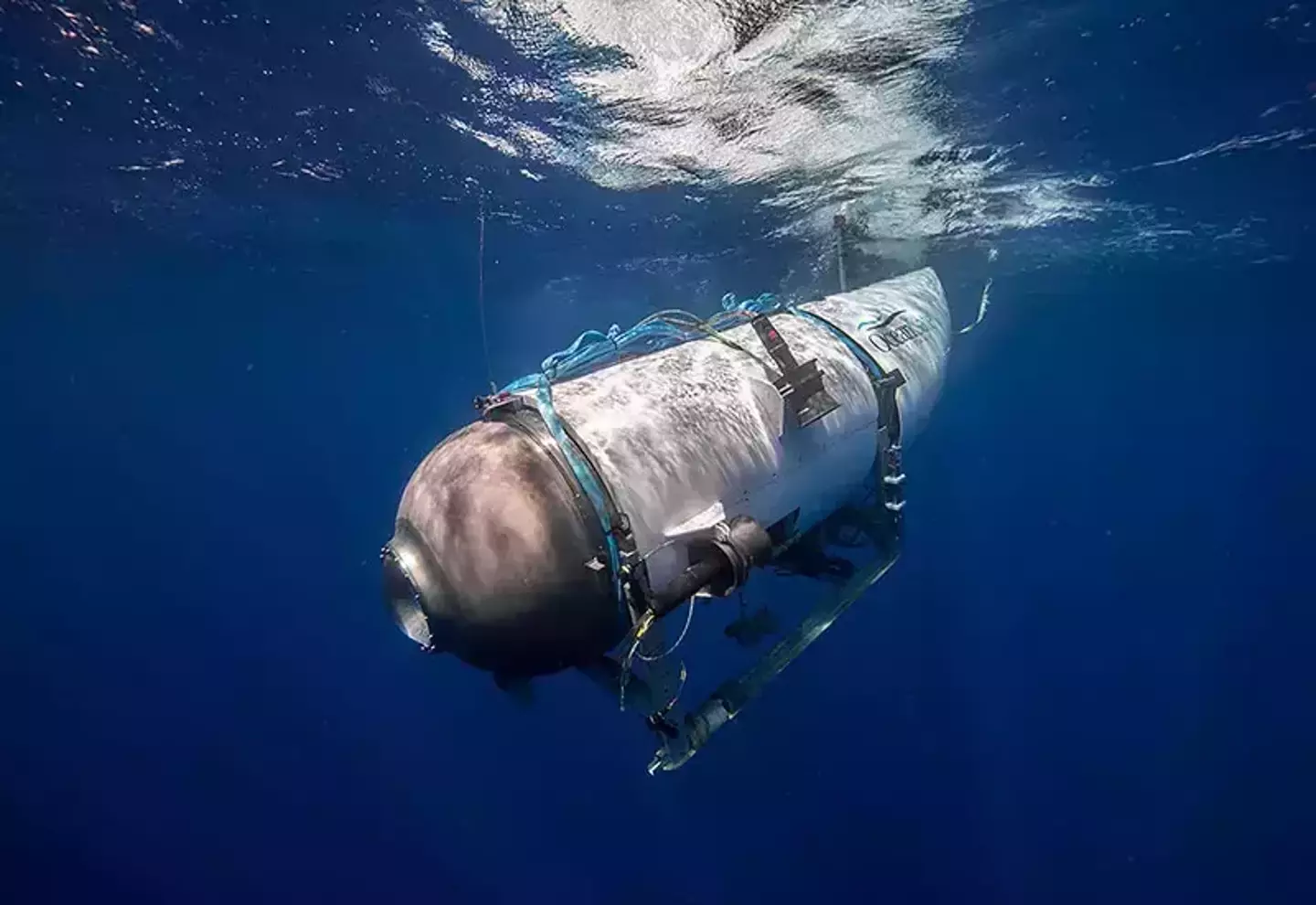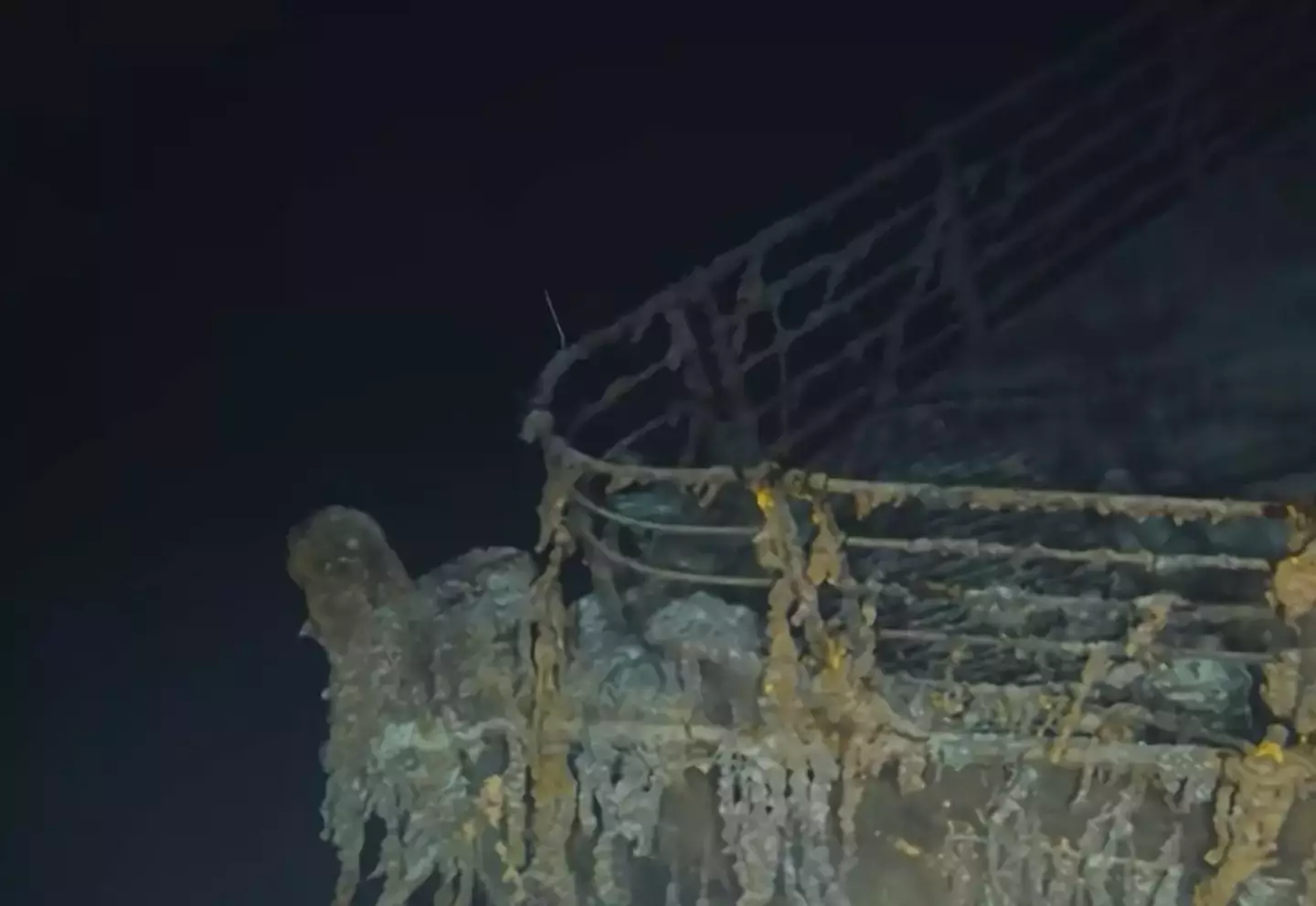
Debris found in the search for the missing OceanGate Titanic submersible is from a ‘landing frame and rear cover’ of the Titan craft, an expert has claimed.
Speaking to BBC News, diving expert David Mearns said that the debris recovered from within the search area is likely to be from the Titan, adding that the president of the Explorers Club – which has strong links within the diving and search/rescue community – said that they’ve found ‘a landing frame and a rear cover from the submersible’.
The US Coast Guard has not yet commented on what the debris might be, but will deliver an update at 8:00pm BST with the latest news on the submersible, which lost contact with its mothership (the Polar Prince) around an hour and 45 minutes into the expedition to the wreck of the Titanic.

Advert
The plan was to take the sub down to 12,500 feet beneath the North Atlantic Ocean to visit the site of the wrecked White Star Liner, which struck an iceberg in April 1912.
However, they were left without contact with the surface, with around 96 hours of emergency oxygen estimated to be available to those onboard.
Now, that 96 hour period has elapsed, though it is possible that the passengers could survive beyond that.
Still, at the last update, the USCG were adamant that it is still being treated as a 'search and rescue' mission.
On board are OceanGate CEO Stockton Rush, British billionaire Hamish Harding, father and son Shahzada and Suleman Dawood, and French diver Paul-Henry Nargeolet.
Advert
Seats on the Titan reportedly cost around $250,000 for a full eight-day excursion, which included a trip to the Titanic wreck site.
Rush’s OceanGate co-founder, Guillermo Söhnlein, found out about the debris during an interview with BBC News earlier on, and explained that the submersible could have suffered a catastrophic ‘implosion’, or could have been at the surface of the water the whole time.
He said: “I know that our protocol for lost comms is for the pilot to surface the sub.
“From the beginning I always thought that’s probably what Stockton would have done.
"In which case it becomes very difficult to find the sub because the surface ship wouldn’t have known it was coming up and wouldn’t have known where to look.
Advert
"My biggest fear through this whole thing watching the operations unfold is that they’re floating around on the surface and they’re just very difficult to find.”

He added: “What I do know is regardless of the sub, when you’re operating at depth the pressure is so great on any sub that if there is a failure it would be an instantaneous implosion.
“If that’s what happened that’s what would have happened four days ago.”
Söhnlein has not worked for OceanGate for 10 years, but said that he would not have acted differently to how he believes Rush may have acted.
Advert
“If anything, I think we need to go back and learn from what’s happening, find out what’s happened, take those lessons and carry them forward,” he said.
Topics: Titanic, World News, News